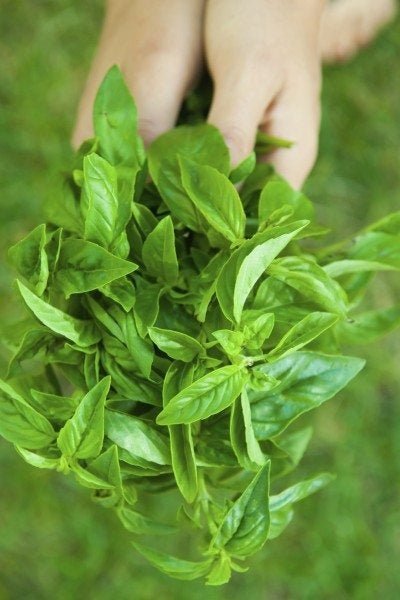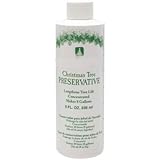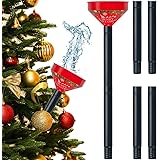Fresh basil is a culinary staple, adding vibrant flavor and aroma to countless dishes. But what happens when the summer sun fades, and the temperatures plummet? Many gardeners face the challenge of keeping their basil plants alive and thriving during the winter months. Fortunately, with the right knowledge and care, you can successfully overwinter your basil indoors and enjoy its fresh, flavorful leaves year-round.
This comprehensive guide will walk you through every aspect of basil winter care, from selecting the right plants to providing optimal light, water, and nutrients. We’ll also cover common problems and how to address them, ensuring your basil plants remain healthy and productive throughout the cold season. Get ready to transform your indoor space into a mini-herb garden and enjoy the taste of summer even in the dead of winter!
Why Grow Basil Indoors During Winter?
Before diving into the specifics of basil winter care, let’s explore the compelling reasons why you should consider growing basil indoors during the colder months:
- Fresh Herbs Year-Round: The most obvious benefit is having access to fresh basil whenever you need it. No more relying on expensive, often lackluster, store-bought basil.
- Cost Savings: Over time, growing your own basil can save you money compared to consistently purchasing it from the grocery store.
- Extend the Growing Season: Instead of letting your outdoor basil plants succumb to frost, you can extend their lifespan and continue harvesting leaves for months longer.
- Therapeutic Benefits: Gardening, even on a small scale, can be therapeutic and provide a sense of accomplishment. Caring for your basil plants can be a relaxing and rewarding activity.
- Aromatic Ambiance: The fragrant aroma of basil plants can add a pleasant and refreshing scent to your home.
Choosing the Right Basil Plants for Indoor Growing
Not all basil varieties are created equal when it comes to indoor growing. Some are naturally more compact and adaptable to indoor conditions than others. Here are some excellent choices for your indoor winter herb garden:
- Dwarf Basil: As the name suggests, dwarf basil varieties like ‘Spicy Globe’ and ‘Greek Column’ are compact and bushy, making them ideal for small spaces. They also tend to be more tolerant of lower light conditions than larger basil varieties.
- Thai Basil: With its distinctive anise-licorice flavor, Thai basil is a flavorful addition to Asian cuisine. It’s relatively easy to grow indoors and tolerates warmer temperatures well.
- Lemon Basil: Lemon basil offers a unique citrusy aroma and flavor. It’s a versatile herb that can be used in both sweet and savory dishes. It also tends to be well-behaved indoors.
- Genovese Basil: The classic Italian basil, Genovese basil can be grown indoors, but it may require more light than other varieties. Ensure it receives ample sunlight or supplement with grow lights.
- Purple Basil: Adding a splash of color to your indoor herb garden, purple basil offers a slightly different flavor profile than Genovese basil. It generally needs similar care to Genovese basil.
When selecting basil plants for indoor growing, consider starting with seedlings or cuttings from healthy outdoor plants. Avoid transplanting mature, overgrown outdoor plants, as they may struggle to adapt to indoor conditions.
Preparing Your Basil Plants for Indoor Life
Before bringing your basil plants indoors, it’s essential to prepare them for the transition. This will help minimize stress and increase their chances of survival:
- Inspect for Pests: Carefully inspect your basil plants for any signs of pests, such as aphids, spider mites, or whiteflies. Treat any infestations with insecticidal soap or neem oil before bringing the plants indoors. This is crucial to prevent pests from spreading to your other houseplants.
- Prune the Plants: Prune back your basil plants to encourage bushier growth and remove any damaged or yellowing leaves. This will also help the plants conserve energy during the transition. Cut stems back by about one-third.
- Repot if Necessary: If your basil plants are in small or overcrowded containers, consider repotting them into slightly larger pots with fresh potting mix. Choose pots with good drainage to prevent root rot. A well-draining potting mix is key; avoid using garden soil.
- Acclimatize Gradually: Gradually acclimatize your basil plants to indoor conditions by bringing them indoors for a few hours each day, gradually increasing the time over a week or two. This will help them adjust to the lower light levels and humidity.
Essential Factors for Successful Basil Winter Care
Once your basil plants are indoors, providing the right environment is crucial for their survival and continued growth. Here are the key factors to consider:
1. Light: The Key to Basil’s Happiness
Basil thrives on sunlight, and providing adequate light is arguably the most critical aspect of basil winter care. Indoors, basil often struggles to get enough natural light, especially during the shorter days of winter.
- South-Facing Windows: The ideal location for your indoor basil plants is a south-facing window, which receives the most direct sunlight.
- Supplemental Lighting: If you don’t have a south-facing window or your basil plants aren’t getting enough light, you’ll need to supplement with grow lights. Fluorescent or LED grow lights are excellent choices. Place the lights a few inches above the plants and keep them on for 12-16 hours per day.
- Signs of Insufficient Light: Be on the lookout for signs of insufficient light, such as leggy growth (long, spindly stems with few leaves), pale leaves, and slow growth.
- Rotating Plants: Rotate your basil plants regularly to ensure that all sides receive equal exposure to light.
Here’s a table summarizing the light requirements for indoor basil:
| Light Level | Description | Recommended Action |
|---|---|---|
| Bright Direct Sunlight | At least 6 hours of direct sunlight per day | Ideal; no supplemental lighting usually needed |
| Bright Indirect Sunlight | Sunlight filtered through a sheer curtain or located a few feet away from a sunny window | May be sufficient for some varieties; monitor growth |
| Low Light | Minimal sunlight; located far from windows | Requires supplemental grow lights |
2. Watering: Finding the Right Balance
Proper watering is essential for healthy basil plants, but overwatering is a common mistake that can lead to root rot. The key is to keep the soil consistently moist but not waterlogged.
- Watering Frequency: Water your basil plants when the top inch of soil feels dry to the touch. The frequency will vary depending on the temperature, humidity, and pot size.
- Watering Technique: Water thoroughly, allowing excess water to drain out of the drainage holes. Avoid getting water on the leaves, as this can promote fungal diseases.
- Signs of Overwatering: Look for signs of overwatering, such as yellowing leaves, wilting, and a musty odor coming from the soil.
- Signs of Underwatering: Signs of underwatering include drooping leaves and dry, brittle soil.
- Water Quality: Use room-temperature water to avoid shocking the roots.
3. Temperature and Humidity: Creating a Comfortable Environment
Basil prefers warm temperatures and moderate humidity. While most homes provide adequate temperatures, humidity can be a challenge, especially during the winter when indoor air tends to be dry.
- Temperature: The ideal temperature range for basil is between 65°F and 80°F (18°C and 27°C). Avoid placing your basil plants near drafty windows or heating vents.
- Humidity: Basil prefers a humidity level of around 40-60%. To increase humidity, you can:
- Use a humidifier.
- Place your basil plants on a pebble tray filled with water.
- Group your basil plants together to create a microclimate with higher humidity.
- Mist your basil plants regularly with water (but avoid overdoing it, as this can lead to fungal problems).
4. Soil and Nutrients: Feeding Your Basil Plants
Basil plants need well-draining soil and regular fertilization to thrive. A good quality potting mix is essential for providing the necessary nutrients and drainage.
- Potting Mix: Use a well-draining potting mix specifically formulated for herbs or vegetables. Avoid using garden soil, as it can be too heavy and poorly drained.
- Fertilizing: Fertilize your basil plants every 2-4 weeks with a balanced liquid fertilizer, such as a 10-10-10 or 20-20-20 formula. Follow the instructions on the fertilizer label. Alternatively, use a diluted fish emulsion or seaweed extract.
- Signs of Nutrient Deficiency: Look for signs of nutrient deficiency, such as yellowing leaves, stunted growth, or pale green foliage.
5. Pruning and Harvesting: Encouraging Growth and Flavor
Regular pruning and harvesting are essential for keeping your basil plants healthy and productive. Pruning encourages bushier growth, while harvesting provides you with fresh basil leaves to enjoy.
- Pinching: Pinch off the top set of leaves regularly to encourage the plant to branch out and produce more leaves.
- Removing Flower Buds: Remove any flower buds that appear, as flowering will reduce leaf production and can affect the flavor of the leaves.
- Harvesting: Harvest basil leaves regularly by snipping them off with scissors or pinching them off with your fingers. Avoid removing more than one-third of the plant’s foliage at a time.
Here’s a table summarizing the pruning and harvesting techniques for basil:
| Technique | Description | Benefits |
|---|---|---|
| Pinching | Removing the top set of leaves on a stem | Encourages bushier growth and prevents the plant from becoming leggy |
| Removing Flower Buds | Pinching off flower buds as soon as they appear | Directs the plant’s energy towards leaf production and maintains leaf flavor |
| Harvesting | Clipping or pinching off leaves for use | Provides fresh basil leaves and encourages continued growth |
Common Problems and Solutions
Even with the best care, you may encounter some common problems when growing basil indoors during the winter. Here’s how to address them:
1. Pests
Indoor basil plants can be susceptible to pests such as aphids, spider mites, and whiteflies. These pests can suck the sap from the leaves, causing them to become discolored and distorted.
- Prevention: Inspect your basil plants regularly for signs of pests. Good air circulation can help prevent infestations.
- Treatment:
- Insecticidal Soap: Spray your basil plants with insecticidal soap according to the label instructions. Be sure to cover all surfaces of the leaves, including the undersides.
- Neem Oil: Neem oil is another effective treatment for pests. Mix neem oil with water according to the label instructions and spray your basil plants.
- Manual Removal: You can also remove pests manually by wiping them off with a damp cloth or cotton swab.
Read More: Planting Lemon Balm And Cilantro Together: A Perfect Pair?
2. Diseases
Fungal diseases, such as powdery mildew and downy mildew, can also affect indoor basil plants, especially in humid conditions.
- Prevention: Provide good air circulation and avoid getting water on the leaves.
- Treatment:
- Remove Affected Leaves: Remove any leaves that show signs of disease.
- Fungicide: If the infection is severe, you may need to use a fungicide specifically labeled for use on herbs.
3. Leggy Growth
Leggy growth, characterized by long, spindly stems and few leaves, is a common problem with indoor basil plants that are not getting enough light.
- Solution: Provide more light, either by moving your basil plants to a sunnier location or supplementing with grow lights. Prune back the leggy stems to encourage bushier growth.
4. Yellowing Leaves
Yellowing leaves can be caused by a variety of factors, including overwatering, underwatering, nutrient deficiency, or pests.
- Solution: Check the soil moisture and adjust your watering accordingly. Fertilize your basil plants if they are nutrient deficient. Inspect for pests and treat as necessary.
Advanced Basil Winter Care Techniques
For those looking to take their basil winter care to the next level, here are some advanced techniques to consider:
1. Hydroponics
Hydroponics is a method of growing plants without soil, using a nutrient-rich water solution. Basil thrives in hydroponic systems, and this can be an excellent option for indoor winter growing.
- Benefits:
- Faster growth
- Higher yields
- Reduced risk of soilborne diseases
- Types of Hydroponic Systems: There are several types of hydroponic systems, including deep water culture, nutrient film technique, and ebb and flow.
2. Propagation
You can easily propagate basil plants from cuttings, allowing you to expand your indoor herb garden without having to purchase new plants.
- Taking Cuttings: Take cuttings from healthy stems that are about 4-6 inches long. Remove the lower leaves and place the cuttings in a glass of water.
- Rooting: Roots will typically develop within a week or two. Once the roots are about an inch long, you can transplant the cuttings into pots with potting mix.
3. Successive Planting
To ensure a continuous supply of fresh basil leaves throughout the winter, consider using successive planting. This involves planting new basil plants every few weeks, so you always have plants at different stages of growth.
Basil Varieties for Unique Flavors and Aromas
Beyond the common Genovese basil, exploring different basil varieties can add exciting flavors and aromas to your culinary creations. Here are a few to consider for your indoor winter garden:
- Cinnamon Basil: Offers a warm, spicy cinnamon flavor and aroma. Great for teas, desserts, and Asian dishes.
- Lime Basil: A refreshing citrusy flavor with a hint of lime. Perfect for salads, cocktails, and seafood dishes.
- African Blue Basil: A beautiful and vigorous basil with a camphor-like aroma and flavor. Attracts pollinators and adds a unique touch to dishes.
- Holy Basil (Tulsi): Revered in Ayurveda for its medicinal properties, Holy Basil has a spicy, clove-like flavor. Often used in teas and traditional remedies.
Tips for Maximizing Basil Flavor
Even when grown indoors, you can take steps to maximize the flavor and aroma of your basil leaves:
- Harvest in the Morning: The essential oils responsible for basil’s flavor are most concentrated in the morning, after the dew has dried.
- Avoid Bruising the Leaves: Handle basil leaves gently to avoid bruising, which can release bitter compounds.
- Use Fresh: Basil is best used fresh, as drying can diminish its flavor.
- Proper Storage: If you need to store basil, wrap the leaves in a damp paper towel and place them in a plastic bag in the refrigerator. Avoid storing basil in the refrigerator for more than a few days, as it will wilt.
- Don’t Overcook: Add basil to dishes at the end of cooking to preserve its flavor and aroma.
Culinary Uses for Your Homegrown Basil
Now that you’re growing your own basil indoors, let’s explore some delicious ways to use it:
- Pesto: The classic basil sauce, perfect for pasta, sandwiches, and dips.
- Caprese Salad: A simple and refreshing salad with fresh mozzarella, tomatoes, and basil.
- Pizza: Sprinkle fresh basil leaves on pizza after baking for a burst of flavor.
- Pasta Sauces: Add basil to tomato sauce, cream sauce, or other pasta sauces for an extra layer of flavor.
- Salads: Use basil in salads with tomatoes, cucumbers, or other vegetables.
- Soups: Add basil to soups like tomato soup, minestrone, or gazpacho.
- Teas: Steep fresh basil leaves in hot water for a refreshing and aromatic tea.
- Infused Oils and Vinegars: Infuse olive oil or vinegar with basil for a flavorful condiment.
Troubleshooting Common Basil Winter Care Issues: A Quick Guide
Even with diligent care, issues can arise. This table offers a quick reference for common problems and solutions:
| Problem | Possible Causes | Solutions |
|---|---|---|
| Yellowing Leaves | Overwatering, underwatering, nutrient deficiency, pests, cold drafts | Adjust watering, fertilize, inspect for pests, move to a warmer location |
| Wilting Leaves | Underwatering, root rot (due to overwatering), transplant shock | Water thoroughly, check for root rot and repot if necessary, provide shade after transplanting |
| Leggy Growth (long, spindly stems) | Insufficient light | Move to a sunnier location, supplement with grow lights |
| Small Leaves | Insufficient light, nutrient deficiency | Provide more light, fertilize regularly |
| Brown Spots on Leaves | Fungal disease, sunburn (too much direct sun) | Remove affected leaves, improve air circulation, provide shade during peak sun hours |
| Pests (Aphids, Spider Mites) | Dry air, lack of inspection | Increase humidity, inspect regularly, treat with insecticidal soap or neem oil |
| Slow Growth | Insufficient light, low temperature, nutrient deficiency | Provide more light, maintain a warm temperature, fertilize regularly |
Frequently Asked Questions (FAQ) About Basil Winter Care
How do I take care of basil during the winter?
During the winter, basil requires special care to survive. Here are some tips to help you take care of your basil plants during the colder months.
Can basil survive in cold temperatures?
Basil is a warm-weather herb and is not frost-tolerant. It cannot survive in extremely cold temperatures. Therefore, it is important to take steps to protect your basil plants during the winter.
Should I bring my basil plants indoors during winter?
Yes, it is recommended to bring your basil plants indoors during winter. They are sensitive to cold temperatures and indoor conditions provide a more suitable environment for their survival.
Where should I place my basil plants indoors during winter?
Place your basil plants near a sunny window where they can receive adequate sunlight. If sunlight is limited, you can also use grow lights to provide sufficient light for your basil plants.
How often should I water basil plants during winter?
Water your basil plants thoroughly but be careful not to overwater them. As indoor conditions are generally drier during winter, you may need to water them less frequently compared to the warmer months. Ensure the soil is evenly moist but not waterlogged.
Do basil plants need fertilizer during winter?
Basil plants do not require as much fertilizer during winter as they do during the growing season. You can reduce the frequency of fertilizing to once every 4-6 weeks using a balanced, water-soluble fertilizer.
How can I prevent pests from infesting my basil plants during winter?
Inspect your basil plants regularly for signs of pests such as aphids, spider mites, or whiteflies. If you notice any infestation, you can use organic insecticidal soap or neem oil to control the pests and prevent further damage.
Can I prune my basil plants during winter?
It is advisable to avoid heavy pruning during winter as it may stress the plants. However, you can remove any dead or yellowing leaves to promote healthier growth. Pruning can be done sparingly once the plants show signs of new growth in spring
Conclusion: Enjoying Fresh Basil All Winter Long
With the right knowledge and a little effort, you can successfully grow basil indoors during the winter and enjoy its fresh, flavorful leaves year-round. By providing adequate light, water, temperature, and nutrients, you can create a thriving indoor herb garden that will enhance your culinary creations and bring a touch of summer to your home, even in the coldest months. So, embrace the joys of indoor gardening and savor the taste of homegrown basil all winter long!
“`
Auto Amazon Links: No products found.
Perfect Plants Christmas Tree Saver 8oz. | Easy Use Xmas Tree Preserver Food | Have Healthy Green Christmas Trees All Holiday Season
$9.97 (as of December 11, 2025 04:08 GMT +00:00 - More info- Product prices and availability are accurate as of the date/time indicated and are subject to change. Any price and availability information displayed on [relevant Amazon Site(s), as applicable] at the time of purchase will apply to the purchase of this product.
Rocky Mountain Goods Christmas Tree Food - 8 oz Tree Preservative - Reduce Needle Drop - Greener Scent - Fir, Pine, Spruce Trees - Extend Tree Life
$9.95 (as of December 11, 2025 04:08 GMT +00:00 - More info- Product prices and availability are accurate as of the date/time indicated and are subject to change. Any price and availability information displayed on [relevant Amazon Site(s), as applicable] at the time of purchase will apply to the purchase of this product.
VICAMB 39.3 Inch Christmas Tree Watering Funnel,Christmas Tree Watering System Device,Long Tree Watering Funnel Spout for Indoor Outdoor Xmas Tree
$16.99 (as of December 11, 2025 04:08 GMT +00:00 - More info- Product prices and availability are accurate as of the date/time indicated and are subject to change. Any price and availability information displayed on [relevant Amazon Site(s), as applicable] at the time of purchase will apply to the purchase of this product.
SUNEZLGO Christmas Tree Watering Funnel, Christmas Tree Watering System Tree Waterer, Real Christmas Tree Water Funnel, Xmas Adjustable Metal Tubes Spout for Indoor Outdoor Christmas Tree
$19.99 (as of December 11, 2025 04:08 GMT +00:00 - More info- Product prices and availability are accurate as of the date/time indicated and are subject to change. Any price and availability information displayed on [relevant Amazon Site(s), as applicable] at the time of purchase will apply to the purchase of this product.
EZMeetU Christmas Tree Watering Funnel, 47 Inch Flower Shape Adjustable 6 Section Design, Christmas Tree Watering System, Christmas Tree Waterer, Long Funnel Wide Opening Reusable, Plant Watering Tool
$16.99 (as of December 11, 2025 04:08 GMT +00:00 - More info- Product prices and availability are accurate as of the date/time indicated and are subject to change. Any price and availability information displayed on [relevant Amazon Site(s), as applicable] at the time of purchase will apply to the purchase of this product.
Muddy Mat® Shown on TV Super Absorbent Microfiber Dog Door Mat for Muddy Paws, Non-Slip Washable Pet Rug, Quick Dry Chenille Entryway Carpet, Machine Washable Indoor Outdoor mat, Grey 30"x19"
$24.95 (as of December 9, 2025 17:49 GMT +00:00 - More info- Product prices and availability are accurate as of the date/time indicated and are subject to change. Any price and availability information displayed on [relevant Amazon Site(s), as applicable] at the time of purchase will apply to the purchase of this product.
Snow Joe Premium Enviro Blend Ice Melt, Green-Coated Deicer Crystals, 50 lb - Safer Melter for Vegetation, Concrete & Metals w/ Anti-Corrosion Calcium Magnesium Acetate
$32.97 (as of December 9, 2025 17:49 GMT +00:00 - More info- Product prices and availability are accurate as of the date/time indicated and are subject to change. Any price and availability information displayed on [relevant Amazon Site(s), as applicable] at the time of purchase will apply to the purchase of this product.
Zevo Flying Insect Trap Official Refill Cartridges - Fits Both Zevo Trap & MAX Indoor Fly Trap - Authentic Trap+Lock Technology to Catch Gnats, House & Fruit Flys (4 Official Refill Cartridges)
$11.01 (as of December 9, 2025 17:49 GMT +00:00 - More info- Product prices and availability are accurate as of the date/time indicated and are subject to change. Any price and availability information displayed on [relevant Amazon Site(s), as applicable] at the time of purchase will apply to the purchase of this product.
OLANLY Dog Door Mat for Muddy Paws 30x20, Absorbs Moisture and Dirt, Absorbent Non-Slip Washable Doormat, Quick Dry Chenille Mud Mat for Dogs, Entry Indoor Entryway Carpet for Inside Floor, Grey
$9.99 (as of December 9, 2025 17:49 GMT +00:00 - More info- Product prices and availability are accurate as of the date/time indicated and are subject to change. Any price and availability information displayed on [relevant Amazon Site(s), as applicable] at the time of purchase will apply to the purchase of this product.
ivtivfu Rolling Grill Basket, Removable Wooden Handle, 304 Stainless Steel, Nesting BBQ Tools, Smoker Grilling Accessories for Vegetable, Outdoor Cooking Camping, Birthday Gifts for Men Dad Husband
$24.99 (as of December 9, 2025 17:49 GMT +00:00 - More info- Product prices and availability are accurate as of the date/time indicated and are subject to change. Any price and availability information displayed on [relevant Amazon Site(s), as applicable] at the time of purchase will apply to the purchase of this product.











